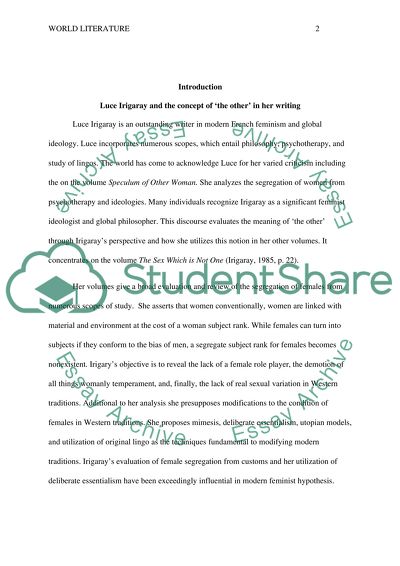Cite this document
(“What Does Irigaray Mean by 'The Other' and How Does She Use this Essay”, n.d.)
Retrieved de https://studentshare.org/literature/1447756-what-does-irigaray-mean-by-ychthe-otheryie-and-how
Retrieved de https://studentshare.org/literature/1447756-what-does-irigaray-mean-by-ychthe-otheryie-and-how
(What Does Irigaray Mean by 'The Other' And How Does She Use This Essay)
https://studentshare.org/literature/1447756-what-does-irigaray-mean-by-ychthe-otheryie-and-how.
https://studentshare.org/literature/1447756-what-does-irigaray-mean-by-ychthe-otheryie-and-how.
“What Does Irigaray Mean by 'The Other' And How Does She Use This Essay”, n.d. https://studentshare.org/literature/1447756-what-does-irigaray-mean-by-ychthe-otheryie-and-how.


